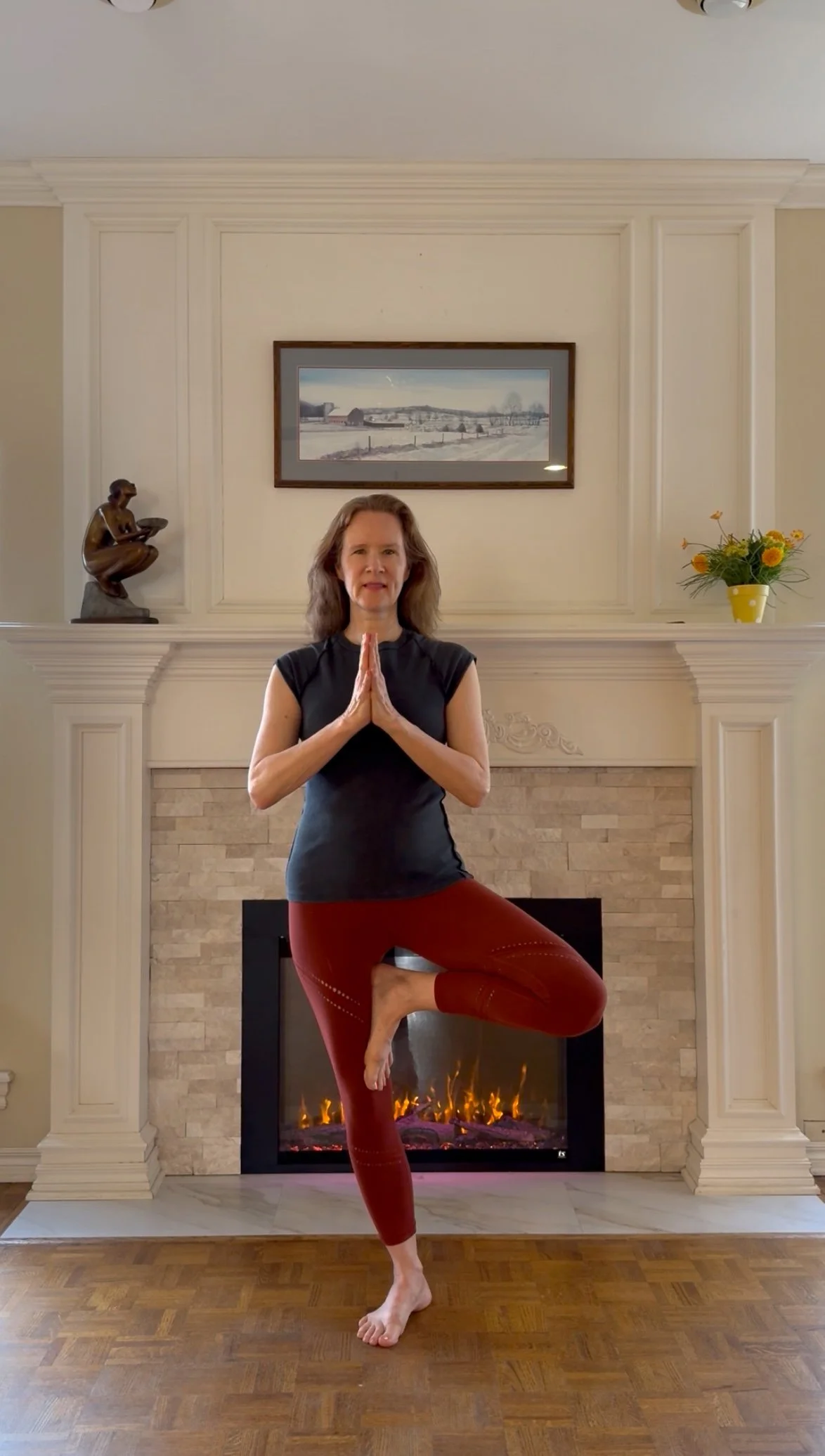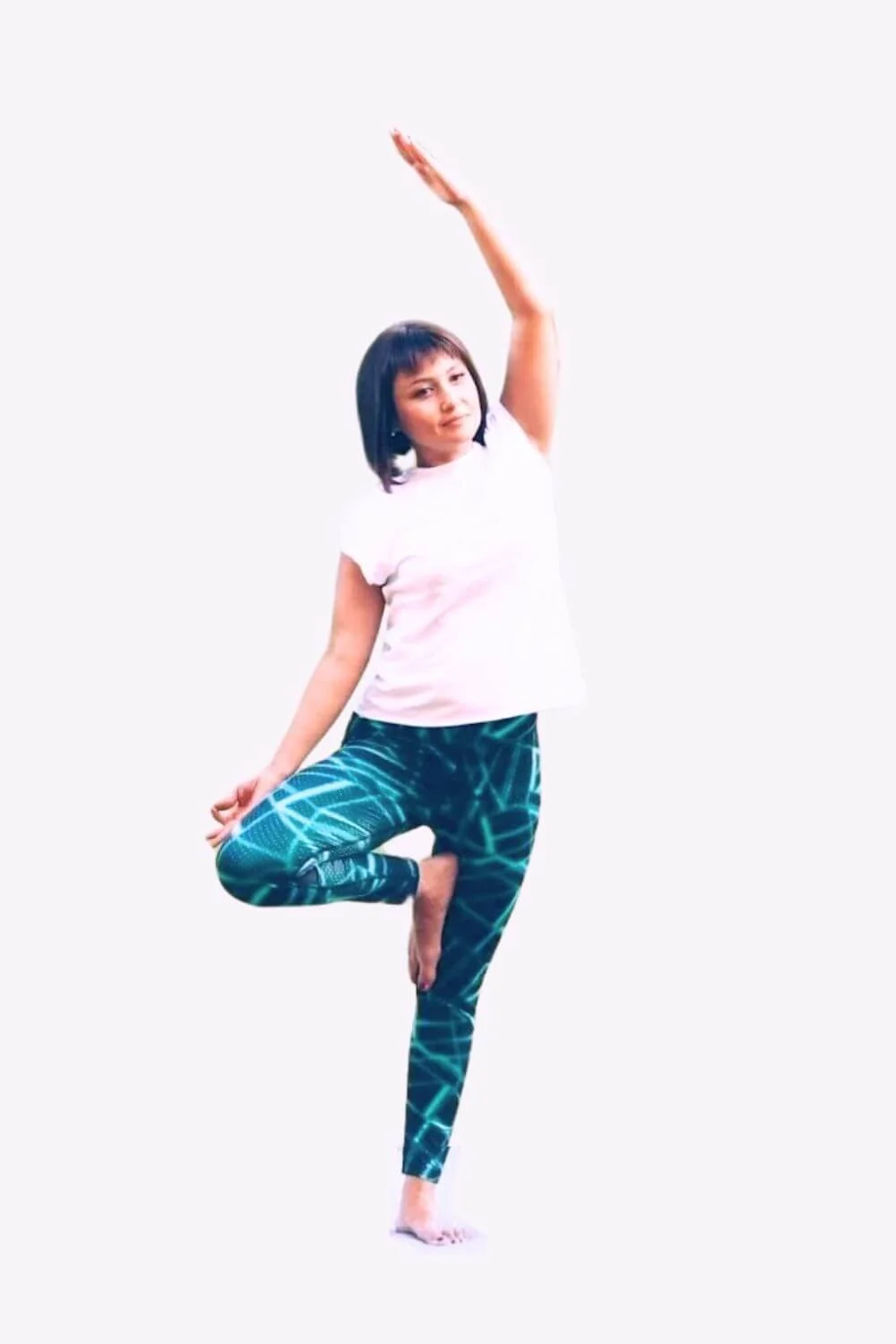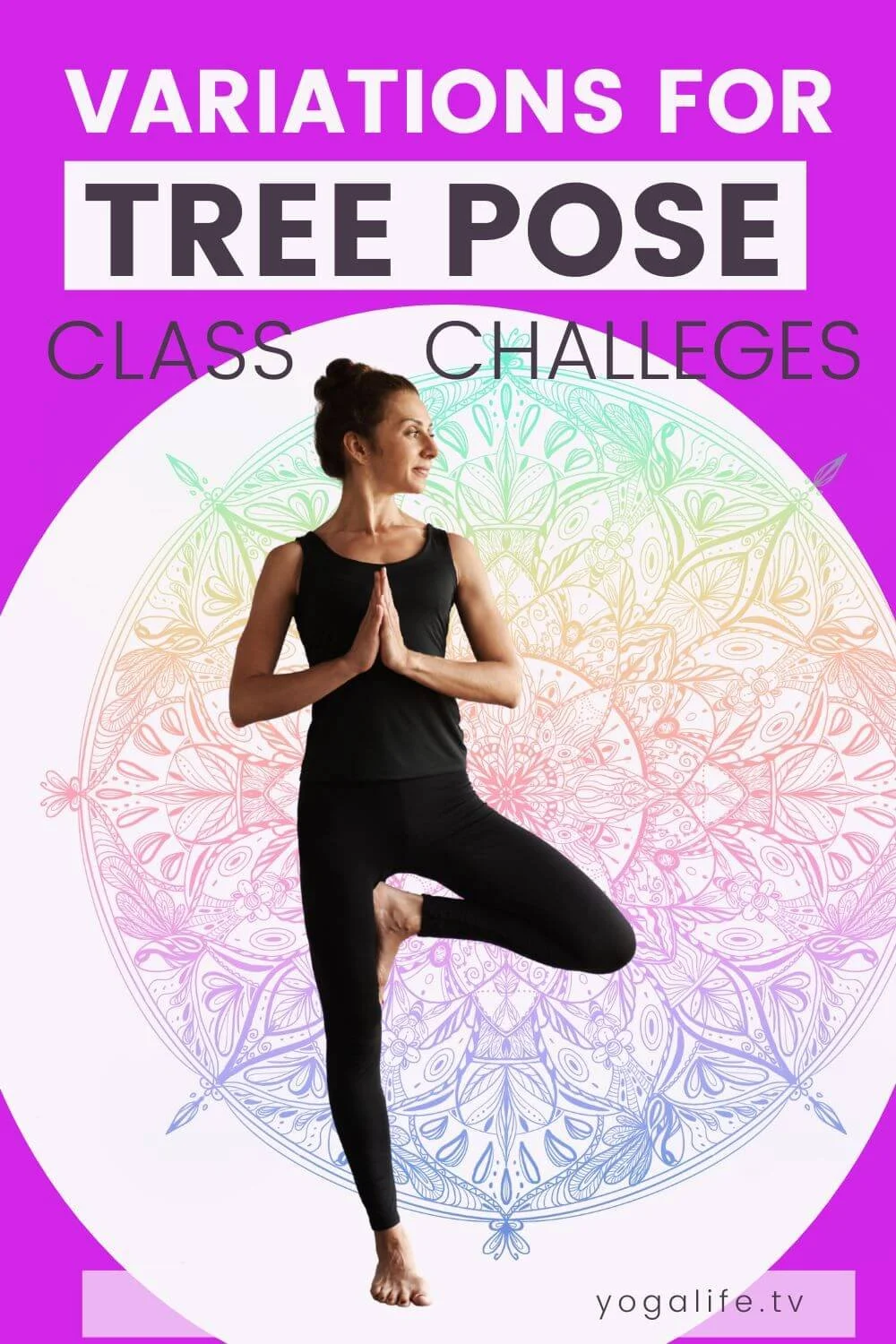Tree Pose Variations: A Complete Guide to Vrkshasana for Yoga Teachers
Becca is the author of Teaching Yoga: Creative Cueing for Safer Mixed Level Classes. A long-time studio owner and teacher trainer, she now teaches in OKC and creates resources for other yoga teachers.
Tree Pose is one of the most recognizable yoga poses that students can practice successfully, regardless of their level of fitness. Whether you're a new teacher still learning how to teach balance poses or a busy teacher looking for class ideas, there is something in this post for you. Below, I’ll share creative Tree Pose variations that you can start using right away, along with modifications, alignment tips, common mistakes to avoid, cueing ideas, and sequencing inspiration.
Tree Pose Variations
Tree Pose Sanskrit:
Vrksasana (vrik-SHAH-suh-nuh)
Vrksa = tree
So Many Ideas for Tree Pose Variations!
For this post, I use the term “variations” to refer to options that make a pose different or more challenging. I use the term “modifications” to describe the options that make the pose more accessible to individuals with various challenges.
The most common variations for the Tree pose involve changing the arm positions. For those students who are ready, holding Tree while slowly changing the position of the arms makes a great class challenge.
Arm variation options for Tree Pose
Arms straight up, palms facing each other, shoulder width apart
Arms straight up with palms together, or fingers clasped with palms turned up
Arms straight up with elbows bent and hands holding the elbow
Arms in a T position, palms up or palms down
One arm straight up, one arm in T position
Arms in front at shoulder level, palms up
Wave arms gently up and down
Cactus arms
Eagle arms
Other common challenging Tree variations
Tree with a side bend
Tree with one foot in half lotus (Ardha Padmasana)
Change the point of focus for the eyes (gaze/dristi) while in the pose to add a challenge
Flowing between Tree and another one-legged balance
Sequencing Ideas for Tree Pose
Tree pose is a versatile pose that can serve as a warm-up, part of a flow, or even a peak pose, depending on the class and the chosen variation or modification.
Pin Me! ❤️
With senior classes, I sometimes use a modified Tree pose with the toes on the ground (some teachers refer to this as “sapling”) in the warm-up. My goal is to activate their glutes and core very early in the class, and modified one-legged balances are an excellent way to achieve this.
For classes with younger or athletic participants, the basic Tree pose also works well as a warm-up, activating and challenging the core. For this same cohort flowing in and out of Tree during a sequence is fun and challenging. Here is an example challenge sequence: Warrior 1, Tree, Big Toe Hold, Tree, Warrior 1, Pyramid. Give it a try!
More intense, longer holds of Tree work better after the class is warmed up. Creating a sequence of one-legged balances is challenging, and when I teach it, some students need a wall nearby. One of my favorite sequences to try is Mountain, Tree, Big Toe Hold (front), Big Toe Hold (to the side), Dancer, Big Toe Hold (front), Mountain. This sequence works for different fitness levels and ages, depending on the modifications and variations we offer.
Tree Pose Modifications
For more modification, alignment, and sequencing ideas see my book on Amazon.
Balancing steadily on one foot is a skill that takes time to develop. I’ve seen people of all ages and even fitness levels struggle when trying Tree for the first time. Older people often find balancing even more challenging, and they must have accessible options to build strength. Here are some of the most common modifications for Tree that work for students in my classes:
Hold onto the back of a chair with one hand
One hand on a wall, or standing with the back against a wall
Keep the toes of the bent leg on the ground, and the heel near the ankle of the standing leg
Place the lifted foot on the inside of the lower leg
Tree Pose Alignment for Teachers to Observe
The following alignment tips are ones I frequently use with my students. These basic corrections are often necessary, regardless of our students’ age or fitness level.
Let the standing foot turn out a little if balancing is easier. The tradition of pointing the toes straight forward doesn’t work for everyone.
Let the knees track with the toes.
Level the pelvis. There is a tendency for beginning students to lift their hip when they bring their foot to the inner thigh.
Stand straight, reaching through the crown of the head, avoiding leaning to either side.
Remind students to breathe; holding their breath actually makes it harder to balance.
Find a focal point (drishti). When balancing, it is helpful to focus your gaze on a spot on the wall.
Encourage students to place a hand on a wall or a chair if they are unable to maintain their balance easily to avoid injuries.
Basic Cueing Ideas for Tree Pose
Engage the core.
Spread the toes and lift the arches.
Level the hips.
Place one foot on the inner calf or inner thigh of the other leg.
Press the foot into the leg and the leg into the foot, creating counter pressure.
Firm the glutes, imagine the sit bones are reaching towards the heels.
Elongate your spine upward, imagine you are reaching through the crown of the head.
Keep your shoulders in a relaxed neutral position. Avoid lifting them to the ears or forcing them downward on the back.
Keep the chest open, widening the collarbone area.
Feel the shoulder blades firm gently on the back.
Let your jaw and face relax.
Feel the breath coming in and out.
Tree Pose Benefits
Everyone, regardless of their fitness level or experience, benefits from practicing Tree Pose. Those who are less active and want to improve their health reap significant benefits from working on a basic, modified version of this pose. Balance is crucial for maintaining our health and independence as we age. I love watching students slowly improve their balance and become more grounded and confident on and off the mat. Students experience both physical and mental/spiritual benefits from this pose.
Physical benefits:
Strengthens feet, ankles, legs, hips, core, and spine
Improves posture
Improves balance and stability
Mental and spiritual benefits:
Improves focus
Builds confidence
Calms the mind
Fosters feelings of groundedness and strength
Keep Learning & Teaching!
Tree Pose is a simple but powerful way to build strength, focus, and stability. With so many tree pose variations available, you can keep the pose fresh and accessible for every student. Use these ideas to spark your creativity and support your students as they grow. One of the most significant rewards for me when teaching is watching students’ health, balance, and confidence transform.
Keep learning, keep teaching, and trust that your voice matters. The more you share your unique way of teaching, the more lives you’ll touch. You’ve got this!
➪ For more teaching yoga tips, check out my book on Amazon.
➪ To receive 6 hours of free CEUs, join my video course:
FREE Mixed Level Teaching Essentials Course!
➪ Check out my video library! Over 400 videos with accessible classes, including modifications.









